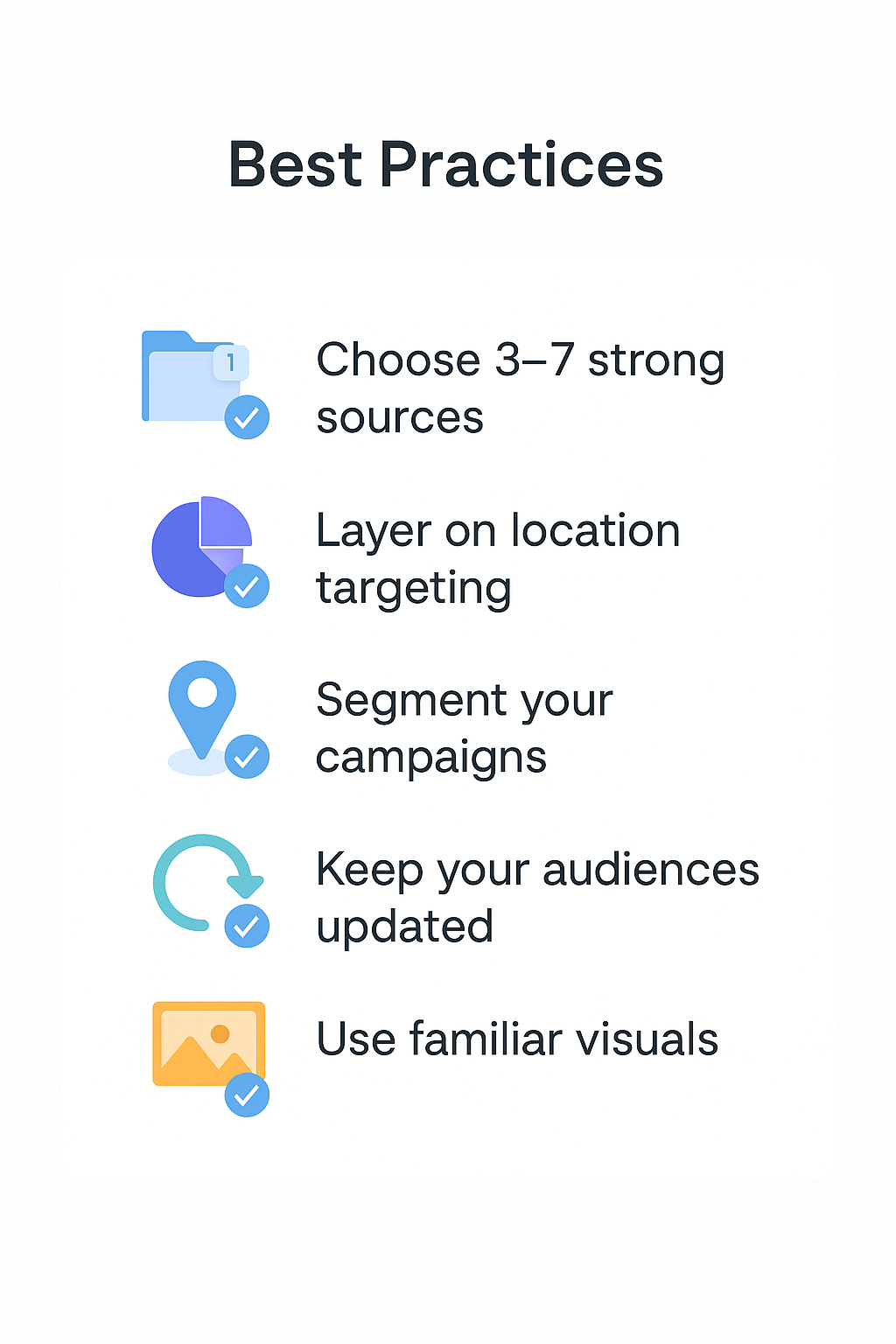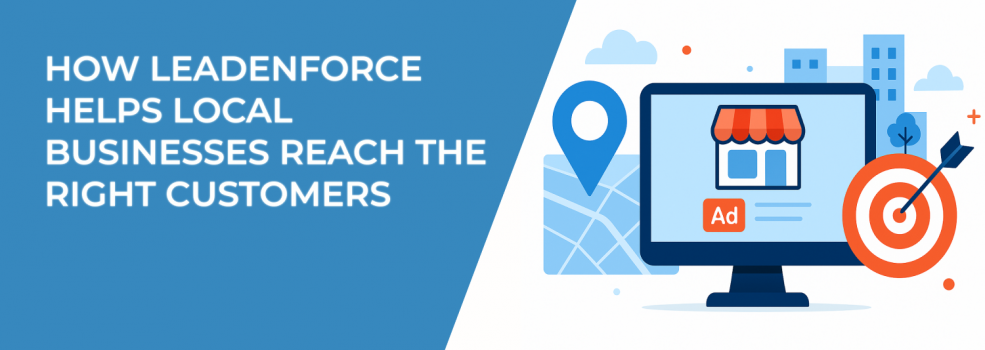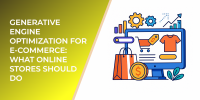Trying to run Facebook or Instagram ads for a local business? You’ve probably run into the same problem again and again: Meta’s ad system doesn’t know your community the way you do. You can add a zip code, choose a few broad interests, maybe try a lookalike audience — but it still feels like a guessing game.
That’s because most local targeting is based on assumptions, not real behavior.
LeadEnforce works differently.
It lets you build custom audiences by targeting people who follow specific Facebook groups, pages, and Instagram accounts — the ones that already attract the kind of people you want to reach.
Let’s look at why this matters, and how local businesses can actually use it to make their ads more effective.
Why Group and Page Targeting Beats Guesswork
When someone follows a Facebook group or Instagram account, it tells you a lot more than a demographic label ever could. It shows you what they care about, what they’re paying attention to, and where they spend their time online.
LeadEnforce helps you turn those signals into targeting — not based on vague interests like “fitness” or “parenting,” but on real communities.
Here’s what you can do with it:
-
Build audiences from people in local Facebook groups (like “Denver Moms” or “Best Eats in Tampa”).
-
Target followers of influencer accounts or local business pages on Instagram.
-
Combine multiple sources to create hyper-relevant segments — think dog owners in Portland who follow pet-friendly cafés and dog grooming groups.
You’re not just hoping Meta understands your market. You’re defining your audience based on what they’re already engaging with.
Want to know how to build a list like this? Here’s a simple guide to creating audiences from Facebook groups.
Real-World Use Cases: Local Businesses Doing It Right
Let’s walk through how different types of local businesses can use LeadEnforce in a practical way — no theory, just strategy that makes sense.

1. Cleaning Services
For cleaning businesses, timing and intent matter more than anything. Targeting “people in your area” isn’t enough when you’re trying to reach people who are ready to hire someone now.
Here’s how to build a better audience:
-
Facebook groups like “Homeowners of [City],” “Busy Professionals [City],” or “Parents of [Neighborhood].”
-
Instagram pages that post minimalist living tips or home organization content with a local following.
-
Pages related to home improvement, property management, or relocation.
Once your audience is built, you can run ads offering time-sensitive deals (“10% off first cleaning this week”) or pitch your service as a weekly stress-saver for busy households.
These groups and pages already attract the kind of people who are likely to need your service — which means your ad doesn’t have to do all the heavy lifting.
2. Yoga Studios and Wellness Brands
If you run a boutique studio or health-focused local business, it’s not about reaching the masses. You need to connect with people who care about mindfulness, routine, or wellness — and who live close enough to walk through your doors.
Sources that make sense here include:
-
Local wellness communities on Facebook (like “Mindful [City]” or “Yoga for Beginners [Neighborhood]”).
-
Instagram accounts run by local fitness coaches or wellness influencers.
-
Pages for nearby juice bars, meditation circles, or fitness gear retailers.
With LeadEnforce, you can segment audiences by interest — stress relief, strength building, flexibility — and match your message to what they care about most.
If you want more control over your audience structure, here’s how LeadEnforce simplifies audience segmentation.
3. Restaurants, Cafés, and Takeout Spots
Most food businesses rely on local word-of-mouth. But in the digital world, that “word-of-mouth” happens in Facebook groups and on foodie Instagram pages.
Start with audiences like:
-
“Foodies of [City]” or “Cheap Eats Near Me” groups.
-
Instagram pages that post about trending spots or feature local meals.
-
Pages of local food delivery services or nearby competitors.
You’re placing your ad in front of people who already talk about food — people who are actively looking for new places to try. Combine that with a limited-time offer or seasonal menu preview, and it becomes a natural next step for them to visit.
This isn’t about blasting your message out to everyone. It’s about showing up where it actually makes sense.
4. Real Estate Agents
If you're in real estate, you already know timing is everything. You’re looking for signals — people who are planning a move, thinking about buying their first home, or researching neighborhoods.
With LeadEnforce, you can target people from:
-
Facebook groups like “Moving to [City],” “[City] Apartments and Rentals,” or “First-Time Homebuyers.”
-
Instagram accounts that showcase local homes or talk about real estate tips.
-
Pages for mortgage brokers, interior designers, or new housing developments.
You can also promote lead magnets — like homebuyer checklists or downloadable neighborhood guides — to turn these audiences into active leads.
It’s a way to find potential buyers before they even land on Zillow.
5. Hair Salons and Beauty Services
When it comes to personal care, most people make decisions based on trust, reputation, and recommendations — all of which happen inside online communities.
The right audience might include:
-
Facebook groups like “[City] Moms,” “Beauty & Wellness [Neighborhood],” or “Events and Deals in [City].”
-
Local Instagram pages sharing beauty tips, hair transformations, or spa content.
-
Pages for wedding planners, fashion stylists, or makeup tutorials that serve your city.
Your ads don’t need to scream for attention. Just show your best work, offer a new-client special, and add a soft nudge to book online. If they already follow a trusted beauty group, your ad feels more like a suggestion than a sales pitch.
Tips for Making LeadEnforce Work Harder
To get the most out of LeadEnforce, don’t just grab random sources and hope for the best. Be intentional about who you’re targeting and why.

Here are five practical tips:
-
Choose 3–7 strong sources for each audience. These should be highly relevant — it’s better to go narrow and precise than wide and random.
-
Layer on location targeting in Meta. Use LeadEnforce to define interests and behaviors, and use Meta’s filters to keep it local.
-
Segment your campaigns. Don’t group all your sources into one audience. Try different versions based on interest types — like food lovers vs. working parents.
-
Keep your audiences updated. Refresh sources every few months to reflect changes in group activity or local trends.
-
Use familiar visuals. Local landmarks, real customer photos, and city-specific language go a long way in building trust.
Following these steps helps you build campaigns that feel relevant, not random — and that’s the real key to converting ad clicks into customers.
Final Thoughts
Local advertising doesn’t need to be complicated — it just needs to be smarter. With LeadEnforce, you’re not relying on Meta to “figure out” your audience. You’re choosing it yourself, based on real-world behavior and community signals.
No flashy hacks. No generic strategies. Just a better way to reach the people who are already paying attention — you just need to meet them where they are.
Ready to try it? Here’s how to pick the right Facebook and Instagram sources.

